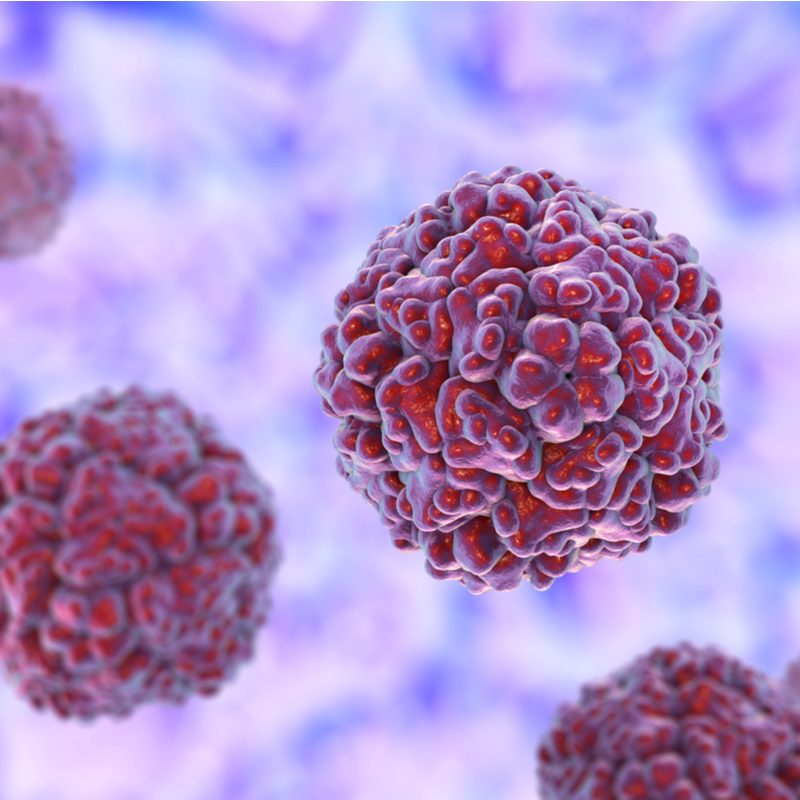
What is the echovirus?
Echoviruses belong to the family of enteroviruses, which mainly cause skin rashes, gastrointestinal infections, neurological as well as flu-like symptoms and complaints . The non-enveloped, spherical RNA echoviruses are counted among the Picornaviridae, whereby they can be differentiated into 27 serotypes . Next to the rhinoviruses, the echoviruses are the virus species most frequently found in humans.
Where does the echovirus occur?
The echoviruses are common all over the world. However, in countries with a lower social infrastructure, lower hygiene measures and contaminated water, echoviruses are particularly common. In countries with mild climates, infections by these viruses occur mainly in summer and autumn.
How is the echovirus transmitted?
Echoviruses have the property of being able to infect almost all body cells, but the virus is primarily transmitted via the faecal-oral route (smear infection). Inadequate hygiene, i.e. contaminated hands, play an essential role in this. Affected persons excrete the virus with their stool for weeks. But the echoviruses can also easily survive for a long time on objects and be contagious.
However, echoviruses can also be transmitted via droplet infection, i.e. through the respiratory tract. After the viruses have multiplied in the gastrointestinal tract, they spread throughout the body and can infect the central nervous system, the spleen, the liver, the bone marrow, the lungs and the heart.
What is the incubation period of the echovirus and how long is one contagious?
The time between infection and the onset of the first symptoms is between 3 and 7 days up to 25-35 days. In the first weeks, the affected person is highly contagious. However, even after the symptoms have subsided, the recommended hygiene measures must continue to be observed so that the echoviruses continue to be excreted in the stool for many weeks.
What diseases are caused by the echovirus?
The echoviruses can be considered as the cause of a whole variety of diseases in . The most common diseases caused by echoviruses are the following:
- Respiratory illness, Summer flu,
- Aseptic meningitis,
- Myocarditis and pericarditis
- Epidemic pleurodynia,
- Herpangina,
- Hand-mouth-foot disease,
- Acute haemorrhagic conjunctivitis or non-purulent conjunctivitis,
- Polyneuritis, polyradiculitis,
- Poliomyelitis.
What are the symptoms of echovirus?
As a rule, people with a healthy and stable immune system do not experience any complaints or symptoms at all, because a healthy immune system can fight off and combat an infection with the viruses without any problems. Once an affected person has survived an infection with the echoviruses, they develop immunity to the type-specific virus. Should symptoms occur, they are often symptoms such as fever, skin rash and flu-like accompanying symptoms. Other symptoms often include a chesty cough and sore throat.
Especially children and infants react particularly irritably to an infection with the echovirus. In infants, an infection is not rarely fatal if treatment is started too late or the infection remains undetected. This is because such a young body has not yet been able to produce sufficient antibodies and because the echoviruses preferentially attack the liver or the heart.
How is the echovirus diagnosed?
If the course of the disease is mild, no specific detection is necessary in individual cases. In more severe cases and if there is an accumulation of cases in community facilities such as schools or day-care centres , material can be sent to a laboratory to detect the virus. Echoviruses can be detected in pharyngeal fluid, stool or cerebrospinal fluid (CSF) , whereby the hit rate is highest in stool, because the causative pathogen can usually be detected in stool samples. If there is a suspicion that echoviruses have caused meningitis, the pathogens can be detected in the cerebrospinal fluid. At the same time, however, echoviruses are also excreted in the stool. This makes an examination of the cerebrospinal fluid and stool necessary. If there is an acute illness, the pathogen is detected with a PCR test. In order to be able to carry out the typing of the echovirus, cell cultures are prepared for cultivation.
How is the echovirus treated?
In general, an infection with echoviruses disappears by itself after a few days and without any necessary therapy. Therefore, if it should be necessary , purely symptomatic treatment with analgesics and antipyretics is given. However, a severe course of the disease can last for several weeks or even longer. At present, no antivirally effective drugs are available against the echovirus .
What long-term complications can arise from the echovirus?
As a rule, an infection with the echovirus heals without problems and there are no long-term consequences or complications. The situation is different if encephalitis or myocarditis was triggered by echovirus, in which case long-term therapy or even long-term care may sometimes be necessary. There are usually no long-term complications.
How can the echovirus be prevented?
To prevent an infection with the echoviruses or to prevent it from spreading , careful hand disinfection is essential. This means that you should wash your hands regularly with warm water and soap and then disinfect them. One should avoid contact with a person who is infected as much as possible . In infant wards and neonatal units, the rules of efficient hospital hygiene apply, i.e. careful hand disinfection, regular gown changes, nappy hygiene and, if an infected infant is suspected or present, isolation. Individual detections of the echovirus do not have to be reported according to the Infection Protection Act . However, if there is an increase in the number of cases, the head of the laboratory must notify the responsible health authority
